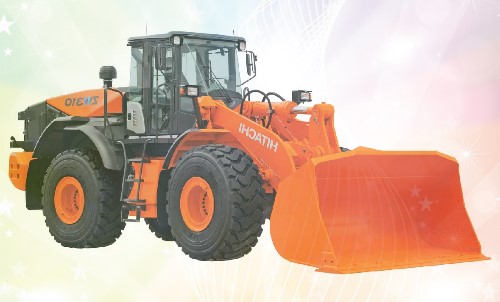Hitachi Wheel Loaders: owner’s, service and maintenance manuals, error codes list, DTC, spare parts manuals & catalogues, wiring diagrams, schematics free download PDF
| Title | File Size | Download Links |
| Hitachi BEKA-MAX Installation Instruction [PDF] | 16.5Mb | Download |
| Hitachi ZW 100-G, ZW 120-G Wheel Loader Workshop Manual [PDF] | 570.8kb | Download |
| Hitachi ZW 120-6 Operator’s and Maintenance Manual [PDF] | 4.3Mb | Download |
| Hitachi ZW 310-6 Operator’s Manual [PDF] | 17.7Mb | Download |
| Hitachi ZW 370-6 Operator’s Manual [PDF] | 8.8Mb | Download |
| Hitachi ZW 550-6 Operator’s Manual [PDF] | 10.4Mb | Download |
| Hitachi ZW180 Technical Manual [PDF] | 15Mb | Download |
| Hitachi ZW180 Wheel Loader Technical Manual [PDF] | 15Mb | Download |
| Hitachi ZW180, ZW220, ZW250, ZW310 Operator’s and Maintenance Manual [PDF] | 6Mb | Download |
Hitachi Front Loader Manuals PDF
Front-loaders by Hitachi are used in the building, road, and utility industries. If modified with the appropriate attachments, the machine can clear snow and even out gravel driveways. To make a loader or bulldozer, machinery might be modified.
Hitachi loader technical details
The firm produces a wide range of loaders, each with its own specific weight and capacity requirements.
The ZW100 is a little machine, while the ZW180 and ZW250 are in the mid-size range, and the ZW370 and ZW550 are the heavy-duty variants.
Heavy-duty diesel engines power the all-wheel drive system of the Hitachi wheel loader. As a result, you’ll be able to separate your working tool with more power and conquer lengthy ascents with ease. Structure-wise, the machines are divided into two halves. A hinge joint connects the parts and allows you to rotate the machinery. Part of the frame parts is box-shaped for added strength. Two hydraulic cylinders, one acting forward and one backward, make up the steering.
A variable-displacement axial piston pump is used in the machines’ hydraulics. The machine’s capacity determines both the pump’s capacity and pressure. The boom and bucket are each managed by their own dedicated hydraulic distributor. A fan in the cooling system is powered by hydraulics and a dedicated pump. One tank stores the whole hydraulic system’s supply of operating fluid.
Loader stopping is accomplished by disc brakes sitting in oil baths. A hydraulic system with separate circuits powers the vehicle, with one circuit dedicated to the front wheels and the other to the back. A dry disc brake with a mechanical drive of inclusion is also present, and it serves as a parking brake. A separate hydraulic cylinder operates the shutdown mechanism.
Hitachi ZW310
New controls and finer tuning make the Hitachi ZW310 front loader an excellent choice. Equipment output has been boosted by new technological advancements. The generator switches to its default, “standard,” setting under low loads. The power unit’s output may be increased with the push of a button if required.
The equipment is powered by a Cummins QSM.11 diesel engine, which is a 6-cylinder in-line engine with a displacement of 10820 cm3. With its turbocharger and intercooler in place, the engine produces 320 horsepower at 1800 revolutions per minute. The Hitachi ZW310 front loader may be ordered with a reversible cooling fan.
The radiator cells may be cleaned by generating a reverse thrust, which removes debris and dust from the cooling system. Automatic direction changes are available.
A toggle enables you to choose between three different transmission modes:
- Entirely automated;
- Deactivating one gear causes the other gears to be changed slowly but automatically;
- the driver decides when the speed changes.
The loader’s size and technical specs are as follows:
Maximum 9240 mm length (with the bucket at ground level), maximum 3470 mm height (to the top of the cabin), maximum 3100 mm to 3445 mm width (with various bucket options), maximum 505 mm ground clearance, maximum 3450 mm wheelbase, maximum 23520 kg weight, and maximum 95 to 125 mm soil cutting depth.

Hitachi ZW310
The machine utilizes the following hydraulic components:
- Tool buckets with a scoring knife or separate teeth (bolted components);
- rock tools with replaceable cutting edges;
- coal buckets (with a solid blade mounted on bolted joints).
Hitachi ZW220
The original Hitachi ZW220 wheel loaders used an Isuzu AH-6HK1 diesel engine that produced 220 horsepower. The Cummins QSB6.7 inline-6 cylinder diesel engine with a tunable turbocharger and compressed air cooler powers the late modification 220 5A. At 2000 rpm, the engine produces a peak of 194 horsepower. The equipment has the company’s own active control system. Crankshaft speed is automatically adjusted, and power unit operation is regulated by an electronic control unit.
There are two fuel-saving modes that may be selected for the motor. Keys are put in the control booth for switching convenience. The Hitachi ZW220 loader truck has a reversible 5-speed gearbox, a torque converter, and a wet multi-plate clutch. Switching between speeds may be done either manually or automatically. The bridges are built with differential and extra-planetary gears in the wheel hubs for propulsion.
Qualities of a Loader:
Dimensions: 8480 mm in length, 2910 mm in breadth, 100-120 mm in soil cutting depth, up to 17100 kg in bucket breakout force, and 17450 mm in total machine weight.
The driver’s field of view is augmented by the panoramic windshield installed in the aluminum cab. On request, a video camera may be mounted so that the operator can see the road behind the loader on a screen mounted in front of the driver. Radio and storage compartments are included as standard features.
A mechanical dampening mount is built into the seat of the operator to mitigate the effects of vibration and shock. Pneumatic bolstering may be used on a per-order basis. The seat may be moved in a number of different ways, and the steering column can be tilted. An automated air conditioner with a filter to keep the air clean is part of the ventilation system.
